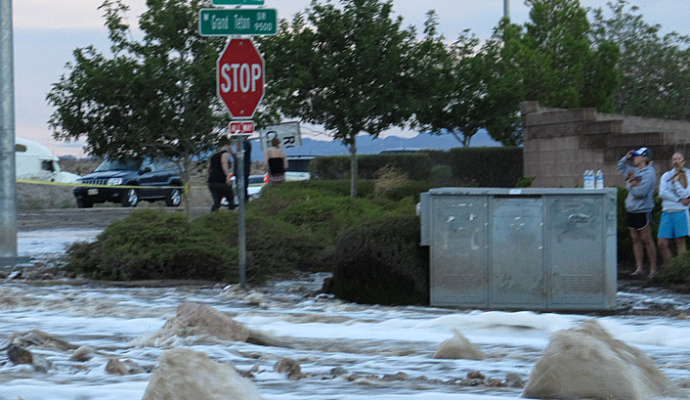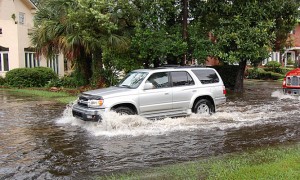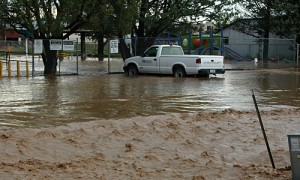Flash Floods Nothing to Gamble with in Las Vegas
If you’re a native or longtime resident of Las Vegas, then flash floods most certainly carry a familiar connotation. Here are warnings for how to stay safe, as well as protect your property, during monsoon season.
If you’re a native or longtime resident of Las Vegas, then you’re familiar with flash floods. Most prevalent during the summer monsoon season, flash floods wreak havoc on area roads, homes, and businesses. So whether you’ve lived in the Valley your whole life or just arrived in town, you’d best heed National Weather Service (NWS) warnings and advisories on flood conditions.
About the Monsoons
In late May, an area of high pressure moves northward over the U.S., intense heat builds over Mexico and the desert Southwest to form low pressure, while high pressure builds from the Four Corners region. The combined forces push moist air from the Gulf of Mexico and eastern Pacific inward, causing desert monsoons. From mid-July through early September, local broadcasts frequently blare discordant warning tones, informing Valley residents of an approaching storm. In June 2013, many smartphones also began issuing emergency broadcast bulletins via the Wireless Emergency Alerts system (WEA).
What Happens to All that Rain?
Funny you should ask — one might think the desert would enjoy nothing better than a good soaking, but ironically, this sudden abundance of moisture is all but rejected by the hardened ground, which is so solidly packed from many dry months that rainwater barely breaches the hard-baked surface. With little absorption into the ground, the heavy rainfall moves quickly, pooling over into low-lying areas, canyons, and washes. The more slow-moving the storm, the greater the likelihood for flooding, although even fast-moving storms produce flood conditions.
What Should I Do?
Driving becomes risky business during a monsoon thunderstorm. “Turn Around, Don’t Drown” is the NWS seasonal public awareness message. If you come upon water running across a road, don’t risk crossing it. There’s no way to know how deep the water actually is, how damaged the road beneath the water may be, or how strong a current is flowing through this flood zone. A car can get sucked into strong current even when water is only a few inches deep. Better to turn your vehicle around and find alternate routes.
If your vehicle is suddenly surrounded by water, leave the car immediately. Take equal caution when traveling on foot or hiking local trails or canyons during monsoon season. Don’t enter any flood washes or other areas which might experience a sudden rush of water, with currents strong enough to carry you away. If rains begin suddenly, get to higher ground immediately.
Protecting Your Home
Sometimes flash floods topple trees or trellises, or breach weakened roofing and facades, leading to both exterior and interior home damage. Assess your yard and home ahead of the season. Clean up and secure outdoor items, and make any necessary structural repairs.
Your insurance agent will run your address through the federal database to ascertain if it’s located in a high-risk zone with FEMA-mandated coverage. In an interview with Meghan DePollo from the Geico Insurance flood team based in Fredricksburg, Virginia, she advised to move valuables to higher areas of your home during flood season, even if the property sits in a low-risk zone.
It’s also worth getting a minimal coverage quote for homes that aren’t federally regulated to carry flood policies, since standard homeowners insurance won’t cover flood-related damages. As Meghan notes, “You can’t really predict how nature is going to act in any given season.”
Rainy Day Rejoicing
Despite the inconveniences and potential dangers caused by monsoon rains each year, many Las Vegas residents still enjoy the respite from typically dry conditions. Some folks go outside in the storm to enjoy the rain, and many don’t even own an umbrella or raincoat — imagine that!
Image Source: Flickr
[cf]skyword_tracking_tag[/cf]




